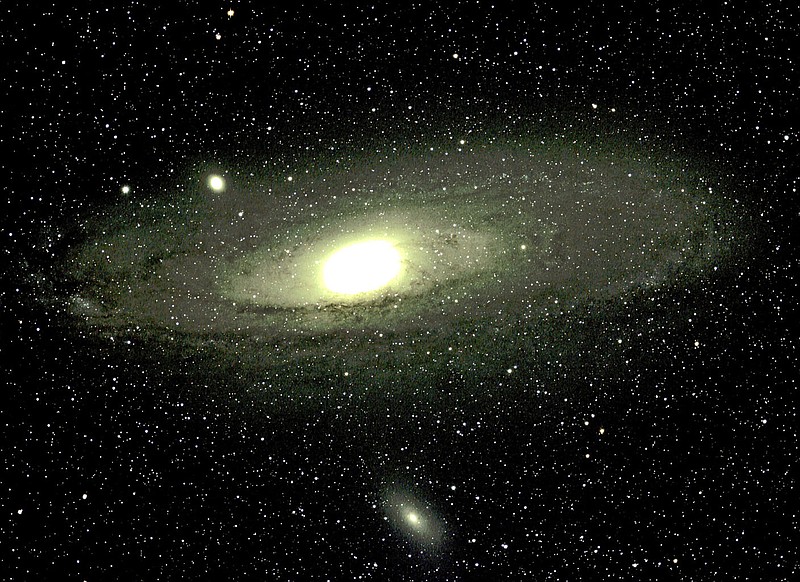This month, I greet the return of an old friend — The Great Galaxy of Andromeda, M31. The Earth has rotated away from being in line with the summer Milky Way when darkness descends. You can still see the Milky Way far to the west just after sunset, but now we are facing outward, quite beyond our home galaxy, to the furthest regions of intergalactic space.
As early as September each year, the sharp-eyed, gazing in full darkness towards the east, and using good binoculars, can see our closest really big neighboring galaxy, M31. However, in September, M31 is close to the eastern horizon and it does not present a good view because of turbulence. This galaxy, probably 120,000 light-years across, is bigger than our galaxy and about 2.5 million light-years away.
Now, in November, it is well-placed, high above the horizon and nearly on an east-west line. To find it, one should use a good web browser and enter something like, ‘finding M31.’ There should be some sort of sky map offered. Locate the so-called Great Square in Pegasus and proceed from there. M31 is high enough by about 9 p.m. so that one could lie on a blanket and look nearly straight overhead to see it with good binoculars.
There are very many images, both amateur and professional, of M31. However, you will not see M31 as it appears in these images when you find it in your backyard. Cameras store light and build it up to a well-developed image of the whole galaxy. Your eyes and brain do not store light as a photograph does. What you will actually see is an oval-shaped ‘cloud’ of diffused light, about as wide as the Moon but certainly not as bright as the Moon. The oval patch of light you see is the center third of the galaxy. The arms of the galaxy extend roughly north-south — but they are hard to see unless you are under very dark skies.
M31 can be seen with the naked eye under ideal conditions. It is the farthest away object that can be seen with the naked eye. I have seen it that way in the southern California desert but I am too old for that now. I have included a recent image I made of M31 so you can see it as a stack of 12 five-minute images made with a 4-inch telescope. But remember — it won’t be that bright or detailed in your binoculars.
Mars will slowly fade in brightness as the swifter Earth moves away from it along its orbit around the Sun. It can still be seen as a distinct disk and it is still well-placed after dark around 9 p.m. You still might see some of the markings on this planet and you still might see the South Polar Cap, even in a relatively small telescope.
Jupiter and Saturn can still easily be seen in the southwest part of the sky. Jupiter will be farthest west of the two and will appear as the brightest object in that part of the sky. Saturn will be the next fairly bright object trailing Jupiter in the same direction. They certainly repay viewing with a small telescope and the larger your scope, the more you will see. Best to look now because soon both planets will disappear behind the Sun from our perspective. They will appear again as morning planets to welcome the new year.
Until next month, stay safe!
David Cater is a former faculty member of JBU. Email him at [email protected]. Opinions expressed are those of the author.

